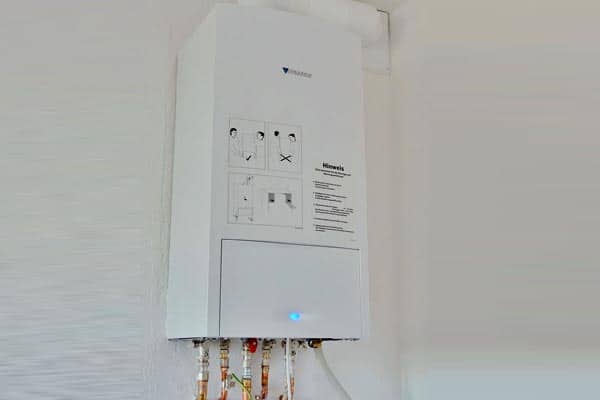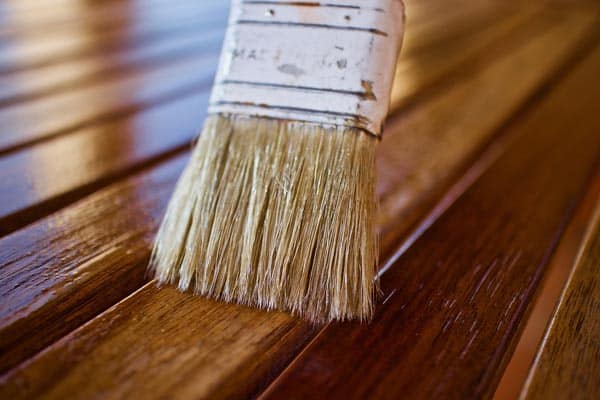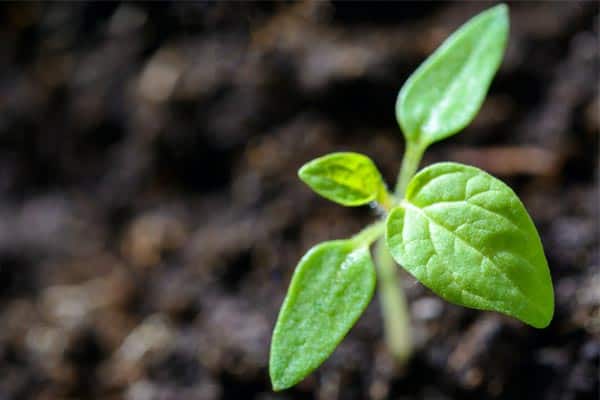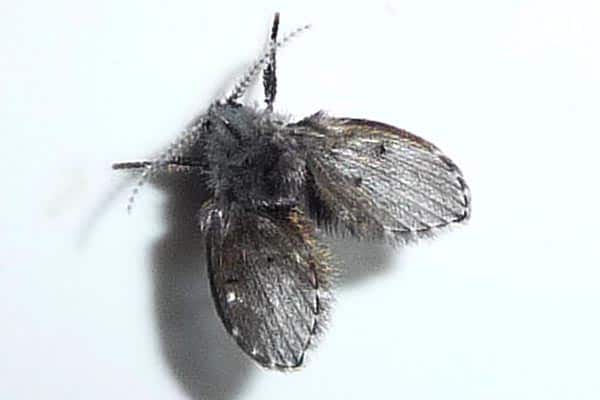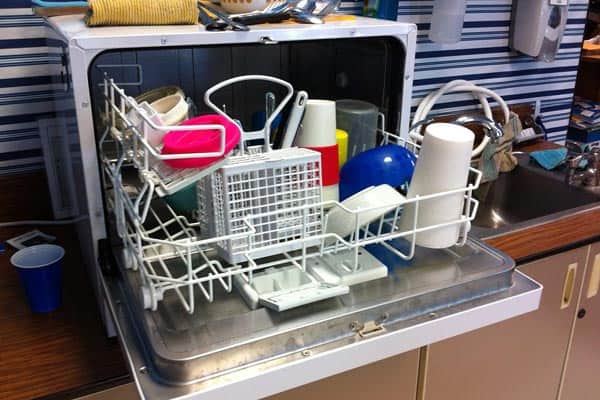How to Clean a Hot Water Heater with Vinegar – Step-by-Step
When you perform the proper maintenance, there is no reason why your water heater can’t last a decade or more.
Knowing how to clean the water heater is one of the biggest components of good maintenance, and vinegar is one household cleaner that works well to help you tackle this project quickly and efficiently.
How to Clean Hot Water Heater with Vinegar
Vinegar is one of the best ways to remove calcium deposits from the water heater.
For the first steps, disconnect the cold water outlet, T&P valve, hot water outlet, or element holes.
Then, get a funnel and pour a gallon of regular household vinegar into your water heater without diluting it with water before allowing it to sit and work on the calcium deposits.
This seems like a big project to take on yourself, so you may wonder why you have to do it.
The Basics of Cleaning Your Hot Water Heater
Why You Should Clean with Vinegar
The water that flows into your home contains minerals, sediments, and chemicals, which build up over time and make your water heater run inefficiently.
The inefficiencies can cause an element that won’t stay lit, uneven heating, or clogged drain valves, leading to rising bills.
The sediment buildup can get so bad that it can cause your water heater to leak. Flushing the system is one way to avoid this.
How Often You Should Flush the Water Heater
You should flush your system at least once a year, but the frequency will depend on your local water supply and the equipment you have.
If you have an efficient water softener installed at your home, the heater may not require you to flush it as often to help reduce sediment buildup.
How to Clean the Hot Water Heater with Vinegar – The Process
Learning how to clean the hot water heater is quite easy as long as you take the time to work in steps. The more you do it, the easier it is to remember the steps.
Step One – Prepare Your Water Heater
Before you do anything, you’ll want to turn your water heater’s thermostat off. Depending on the heater, you might be able to switch it into “Pilot” mode.
This will save you the steps of trying to reactivate the pilot light. If you do this, you won’t have to turn the gas off.
For an electric water heater, you must turn off the unit’s power before switching off the cold water supply.
Step Two – Open Your Home’s Hot Water Faucets
Opening the hot water faucets will help you drain the tank. If you don’t perform this step, you’ll get a vacuum formation that will trap the water in your tank and not allow it to drain.
It’s an odd physics effect, like water getting trapped in a straw when you put your finger on it.
Step Three – Connect a Hose to the Drain Valve
The drain valve is on the bottom of your tank, and you’ll want this hose to lead outside, away from the home’s foundation, or into a very large container.
A bucket might not be big enough, and you risk flooding your basement if you don’t have a big enough container.
If there is a drain in the basement, you can put your hose end there and direct the water to drain out this way.
Step Four – Open the Drain Valve and Empty the Tank
Depending on how much sediment buildup you have in the tank, you could see chunks coming out when you flush it.
If you start cleaning your tank more regularly, you can monitor the sediment and gauge whether you’re cleaning it enough.
If No Water Comes Out, Try This
- If there isn’t any water flow when you open your drain valve, the sediment can build up so extensively in your tank that the drain valve is clogged. You can get a wet/dry shop vacuum and try to dislodge the blockage. If it doesn’t work, you may need an expert.
Step Five – Reactivate Your Cold Water Supply
Reactivate the water supply before you disconnect the hose from the drain valve. The water will help dislodge any additional sediment inside your tank so that it can be flushed out of the hose.
Allow the drain valve to run for a few minutes until the water from the hose is clear. Once it is, turn your cold water supply on.
Step Six – Close the Drain Valve
Disconnect your garden hose from the drain valve and put it away. Go back to the hot water heater and shut off the valve before you turn the cold water supply back on so it doesn’t come running out and create a mess.
Step Seven – Wait a Minute and Turn Off the Faucets
When you refill your water heater tank, the water from your home’s faucets can be discolored. After a minute or two, the water should start to run clear. Once it does, you can switch the faucets off.
Step Eight – Return the Water Heater to a Ready State
For the final steps, you’ll set the thermostat back to the original level, relight your pilot light if you switched it off, and turn the electricity back on if you have an electrical heater.
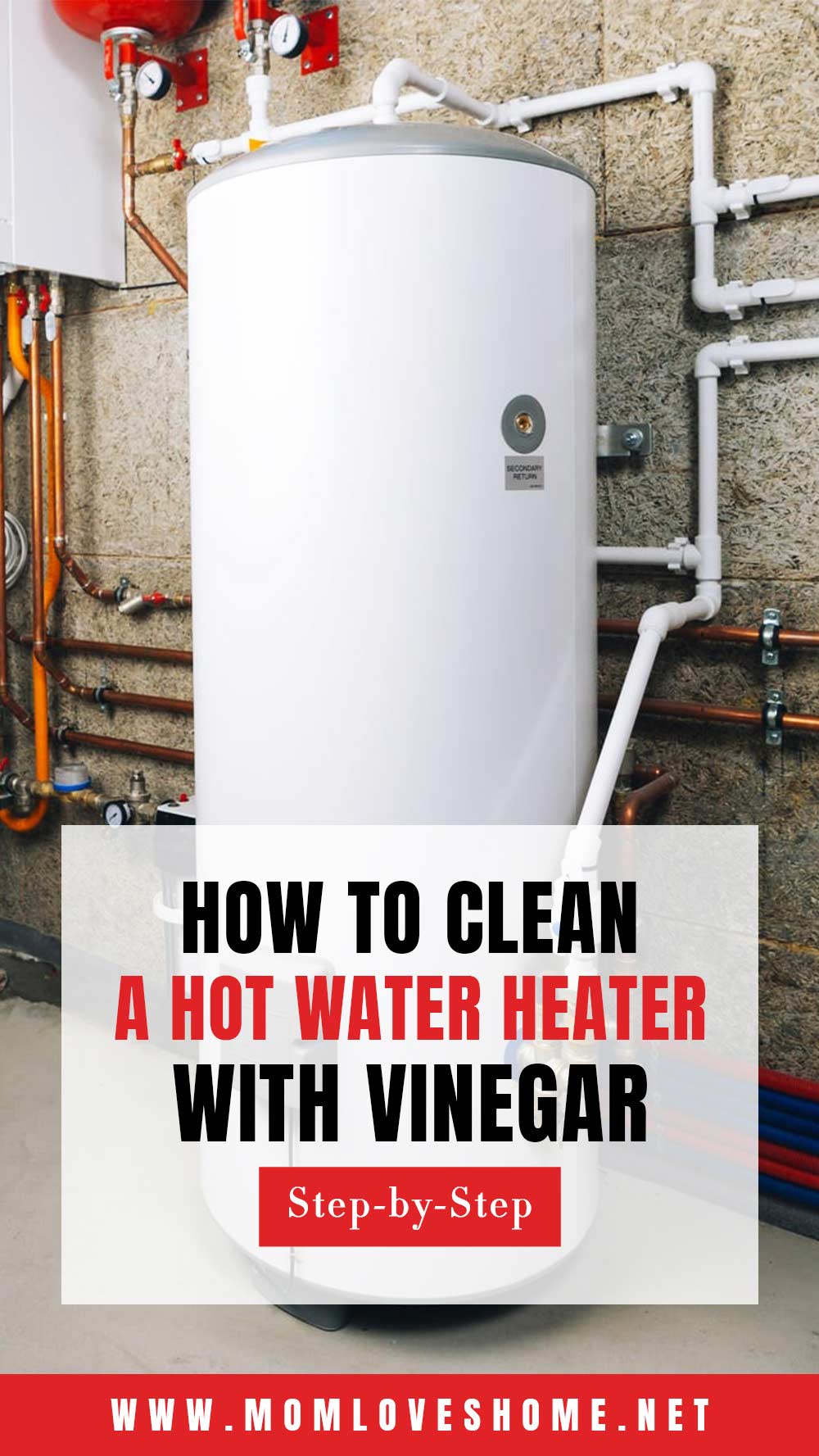
How to Use Vinegar to Clean the Hot Water Heater
Now that you know how to flush the water heater and you believe that your water heater has a severe backup due to sediment, vinegar can cut through the buildup.
You’ll only have to add a few steps to the original eight outlined above. Before you complete steps one to eight, you must do the following.
Remove the Water Heater’s Anode Rod
Find your water tank’s user manual and learn exactly how to remove the anode rod. You’ll usually have to unfasten a recessed bolt using a wrench to loosen the anode rod and remove it.
Get a Funnel and Put the Vinegar in the Tank
When you remove the anode rod from your hot water heater, you’ll notice that it leaves a hole.
This hole is where you must put your funnel before pouring one to four gallons of vinegar into your hot water tank. Don’t put more than four gallons in at once.
Replace the Anode Rod and Let it Sit
Remove the funnel, replace the anode rod, and turn your cold water supply back on to refill the tank with water.
Allow the tank and vinegar-infused water to sit for a full 24 hours. This time will give the acidity in the vinegar time to eat through the sediment in the tank.
Run Through Steps One to Eight
Perform the draining and flushing process outlined in this post’s first eight steps to remove the sediment and vinegar from the tank. The sediment should have dissolved by now.
Cleaning a Tankless Water Heater with Vinegar
Even a water heater without a tank is susceptible to sediment and mineral buildup. The main difference is that a tankless system doesn’t store water but will heat it on demand when needed.
This is why learning how to clean this type of water heater involves learning how to pump water into the system before guiding it out.
Step One – Turn the Gas and Power Off
The first thing you should do is turn the power and gas off if your tankless heater uses gas. If it doesn’t, just turn the power off.
Step Two – Remove the Panel and Test the Electricity
You’ll need a no-contact electrical tester to tell you whether you’ve successfully disconnected the electricity to your water heater.
This is a safety precaution, and the device will tell you whether or not you successfully shut off the correct circuit breaker. You can move on once you’re positive that the electricity is off.
Step Three – Turn Your Water Supply Off
Switch off the water supply directly to the tankless water heater unit.
Step Four – Connect Your Hoses
Unlike a more traditional water heater with a tank, you’ll want to introduce water into it as part of flushing it, so you’ll need dual hoses.
One hose will connect the unit directly to the pump to push water in, and the second hose will connect directly to the isolation valve to catch the water as it expels from the tank.
Step Five – Get a Hose and Pump and Prepare a Five-Gallon Bucket
Get a five-gallon bucket and fill it with vinegar before putting your pump inside. Then, put the open end of your second hose into the bucket as well.
Step Six – Allow the Pump to Run for an Hour
Allow the pump to run for an hour straight. The pump will push the vinegar through the tankless water heater, creating a loop.
The vinegar’s acidity with the constant loop should be strong enough to remove sediment buildup in the heater.
Step Seven – Remove the Pump Before Activating the Cold Water Supply
Leave the end of the second hose in your five-gallon bucket after you empty the vinegar.
Allow the cold water to run through the tankless water heater into the bucket for 5 to 10 minutes before you shut the cold water supply off. This will rinse any remaining sediment or vinegar out.
Step Eight – Return the Heater to an Operational State
Disconnect your hoses, replace your panel on the unit, and reactivate your water supply valves. The last step is to switch your electricity back on.
Bottom Line
Despite what you may think, flushing your hot water heater with vinegar isn’t difficult or time-consuming.
We outlined the steps for you to follow above, and you can use them to bring your water heater back to top shape.
